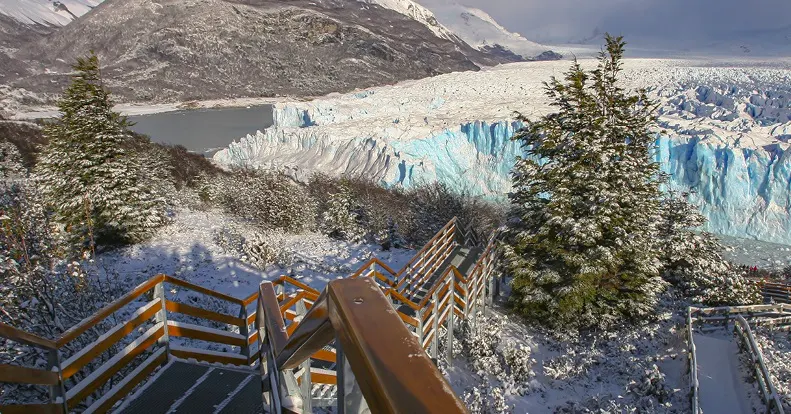Description: Los Glaciares National Park
Province: Santa Cruz, Argentina
Ecoregion: Patagonian Forests and Patagonian Steppe
Area: 726,927 ha
Creation: 1937 (Decree No. 105,433 / 37 ratified by Law No. 13,895)
Declared a World Heritage Site by UNESCO in 1981
Los Glaciares National Park - It preserves an extensive area of continental and glacial ice, the southern Andean-Patagonian forest and sectors of the Patagonian steppe. It is the most extensive of the Argentine national parks.
 |
| Los Glaciares National Park Argentina |
In the forests the lenga, the ñire and the sour cherry stand out. As you descend from the mountain ranges, you will find the calafate and the notro, whose striking red flowers are visited by the ruby hummingbird and a multitude of insects. Finally, to the east is the Patagonian steppe with its characteristic grasslands and stunted and thorny shrubs such as the coirón, the neneo and the guanaco bush.
Los Glaciares National Park - Among the birds you can find the Andean condor, the black eagle, the giant woodpecker, the pythio and the torrent duck. In addition, you can see the emblematic huemul, whose southernmost population finds refuge in this park, while other mammals present in the area are the red fox and the puma.
 |
| Los Glaciares National Park Argentina |
The Moreno glacier acquires tourist relevance due to its easy access, its imposing beauty and a unique natural event: the periodic process of breaking its front. The landscape is completed with the presence of lagoons and melt rivers, lakes and imposing hills such as El Chaltén or Fitz Roy and Torre.
Emblem
Los Glaciares National Park - The huemul (Hippocamelus bisulcus) is a robust, short-legged deer that is very useful for climbing mountain slopes. Males have characteristic two-pointed antlers. It feeds on grasses, grasses, leaves of shrubs and trees. It is a species considered in danger, declared a National Natural Monument in 1996.
 |
| Los Glaciares National Park Argentina |
The Perito Moreno glacier and the Chaltén hill are two symbolic elements of the protected area with worldwide recognition. The first has a length of about 30 km and a front of 4 to 5 km on the southern arm of Argentino Lake. Cerro Chaltén measures 3,405 meters above sea level and is a destination sought after by climbers from all over the world.